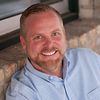
Meeting with a client over lunch last week, I couldn’t help but notice his frustrations about feeling stuck in his job search. As he fleshed out the details of his career exploration process, each story turned difficult, tedious, or impossible. And as the conversation progressed, I could observe him slipping deeper and deeper into his own doubts and fears, fueled by his assumptions and limiting beliefs.
Although my client has lofty career goals — many of which are realistic considering his skills and experience — his assumptions about details such as degree requirements or applicable work experience had become barriers. As he explained support for his reasoning, several of his conclusions didn’t match facts or come from credible sources but rather from personal beliefs based in his past experiences or what others had told him was true.
Our conversation reminded me of how we’ve been taught to follow what friends and family say — and to believe what radios, magazines, newspapers, televisions, and online media tells us.
But that has changed.
The explosion of technology in the past decade has produced an avalanche of new media sources and the advent of “fake news.” The purpose of fake news is to cause confusion by making us question our beliefs using untrue information disguised as legitimate news. It’s been designed to manipulate us and distract us from trusting our own conclusions — thereby creating assumptions and false beliefs.
Yet herein lies the irony: We are also suspect to biased judgments that come from our own tightly held assumptions and beliefs.
We create our own fake news.
Although it is human nature to believe that our own conclusions are correct since our beliefs come from our experience, beliefs are not static — they’re dynamic and change along with us as we grow. The more we learn, the more we sculpt our thoughts — the thoughts that create our beliefs. Clearly stated by Esther Hicks and The Teachings of Abraham, “A belief is only a thought we keep thinking.”
The thoughts and beliefs we hold are establishing our direction and momentum in every decision, every day — and, in turn, create the foundations of our attitudes, actions, and words. Knowing that our thoughts have tremendous power and momentum, it may be wise for us to pay attention to our own broadcast. What “news” are we telling others? And what are we telling ourselves?
Challenging our own thoughts and beliefs is part of the critical thinking process. We can either create barriers to our growth by holding onto beliefs that no longer serve us — or we can question them and choose again.
Curious? Here are tips to gain clarity about our beliefs and avoid being the creator our own fake news:
Challenge assumptions. It’s easy to assume anything we read or hear as truth. However, we also need to keep in mind that “truth” is relative to the context in which a proclamation is made. The fastest way to examine our assumptions is to start with the question, “Why?” Answering that question facilitates a proverbial peeling of the onion — the process of discovering intentions and gaining increased insight and clarity into our beliefs and how they are either supporting us or leading us astray.
Seek to understand. In Steven Covey’s book, The Seven Habits of Highly Effective People, Covey introduces his third habit: Seek First to Understand; Then to Be Understood. This concept provides us with a simple truth — it’s not always about us first. In order for us to make genuine connections with others we must first soften our stance and learn to understand others.
That was then, this is now. The past — though it still feels real — is simply data and our personal history. It is already completed. How we interpret our past and use that knowledge to make decisions in the present is what determines our future. But ultimately, it’s only data. The interpretation of data will constantly change as we do, and being aware of this constant change allows us to shift our perspective and keep learning from the same event or circumstances years later.
Do the work. If we are genuinely seeking to educate ourselves about our changing beliefs, we need to be willing to let go of past beliefs that aren’t serving us and create new ones that do. Remember doing homework for school? Doing the work on ourselves is the much the same. The consequences of taking a test without studying can be disastrous. In life, our homework is to seek to understand, learn about ourselves, and accept the reality that we are constantly changing. The test comes through the results of our choices.
Be your own worst enemy or best ally. Depending on whether we are learning from our experiences or not will be the strongest indicator of how we are supporting ourselves. By reacting to challenges with the same mindset every time, we are destined to repeat the same mistakes — becoming our own worst enemy. Or, with the knowledge that we are always growing and changing, we can choose a more mindful approach and respond deliberately, therefore creating more satisfying experiences and becoming our best ally.
In the end, my client was grateful that I challenged him on his assumptions, but I reminded him that he is the only one responsible for creating his experience. By opening his mind to new information and challenging his own assumptions, he could be less susceptible to what he’s told by others and the media, including himself — and potentially his own fake news. This powerful lesson is true for us all.
Michael Thomas Sunnarborg helps people maintain balance during transitions in their work, relationships, and life. Learn more at michaelsunnarborg.com
Image: Pixabay.com
Originally published at michaelsunnarborg.com on March 6, 2017.
